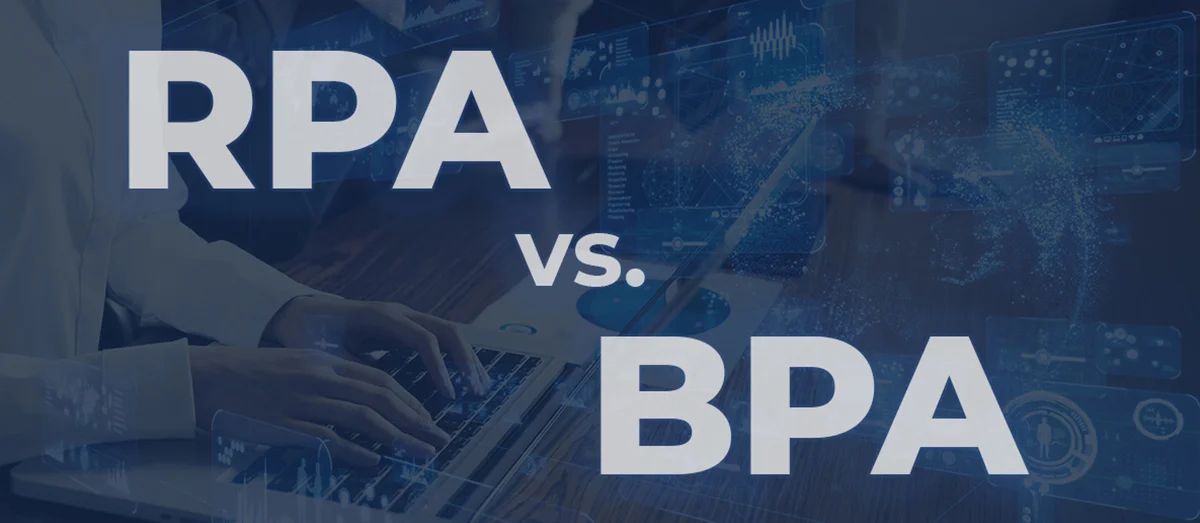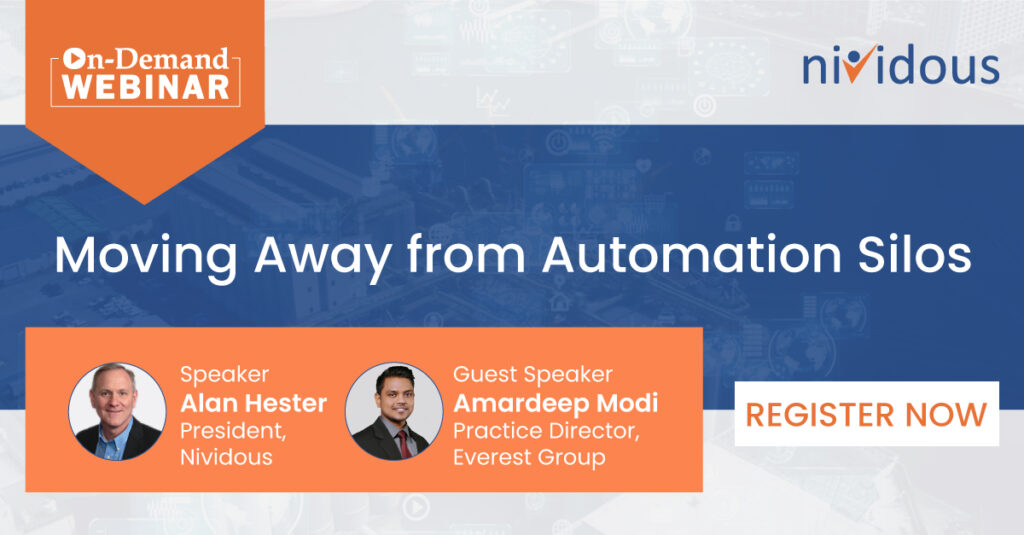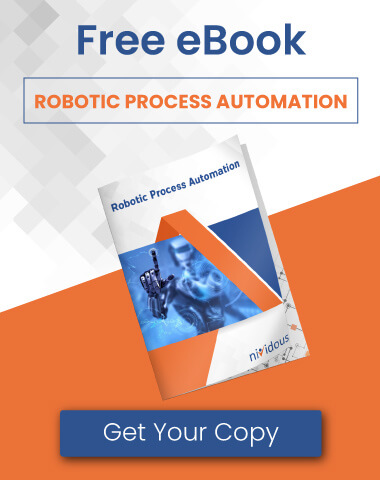The global Business Process Automation (BPA) market is expected to nearly double between 2020 to 2025, from $9.5 million in 2020 to more than $18 million by the end of 2025. Robotic Process Automation (RPA) is a core technology driving this growth. Because RPA and BPA are often discussed in the same breath, it can be tough to detangle one from the other. These are distinct but related terms, and understanding RPA vs. BPA is the first step toward digital transformation—a strategy that’s key to competitiveness in this era of big data.
Because these are new and rapidly developing technologies, the industry has yet to reach consensus on formal definitions. But providers and users alike are coalescing around analysis firm Gartner’s descriptions of RPA and BPA. Here’s how Gartner defines these terms in its authoritative business glossary:
| Business process automation (BPA) is defined as the automation of complex business processes and functions beyond conventional data manipulation and record-keeping activities, usually through the use of advanced technologies. It focuses on “run the business” as opposed to “count the business” types of automation efforts and often deals with event-driven, mission-critical, core processes. BPA usually supports an enterprise’s knowledge workers in satisfying the needs of its many constituencies. – Gartner, 2021 |
| Robotic process automation (RPA) is a productivity tool that allows a user to configure one or more scripts (which some vendors refer to as “bots”) to activate specific keystrokes in an automated fashion. The result is that the bots can be used to mimic or emulate selected tasks (transaction steps) within an overall business or IT process. These may include manipulating data, passing data to and from different applications, triggering responses, or executing transactions. RPA uses a combination of user interface interaction and descriptor technologies. The scripts can overlay on one or more software applications. – Gartner, 2021 |
With these definitions in mind, we can start to understand the relationship between RPA and BPA, including the key difference between the two terms.
Start your journey to BPA with the Nividous Quick Start Program.
The program guarantees a trained and customized RPA bot in less than four weeks.
Business Process Automation Vs. Robotic Process Automation
The difference in RPA vs. BPA is that the former is a tool for accomplishing the latter. There are many paths to BPA; RPA is one of them (and one of the most promising). But there are lots of ways to automate business processes without using RPA:
- In computing, a macro is a small program that automates repetitive tasks, whether that’s formatting data in a spreadsheet, auto-filling forms, or virtually infinite other options. Macros accomplish multiple steps in a given task without further action from the user—which is to say they automate those steps.
- You can use an API or original back-end coding to integrate software applications. This allows the systems to share predefined data, eliminating manual data-handling work. According to Gartner’s definition, this type of automation may not rise to the level of BPA (which goes “beyond conventional data manipulation and record-keeping activities”). But it also may: If you’re using data from an ERP to auto-generate invoices in your accounting system, for instance, that’s a complex process that qualifies as BPA.
- Today’s digital marketing software typically includes automation elements. You can configure email marketing systems to automatically send a scheduled message to site visitors or cart abandoners. Or you can use social media marketing to share random articles from your content library. Because the user doesn’t have to manually complete the task, these are small-scale forms of BPA.
The examples above show that not all BPA uses RPA. However, all RPA implementations do achieve BPA; RPA is fundamentally a BPA technology. And RPA has an advantage over those other forms of automation: RPA bots complete their tasks on the front end of software—through user interfaces—so they can effectively integrate any combination of applications, including legacy systems and SaaS solutions, all without costly back-end programming. This flexibility allows RPA bots to perform tasks across multiple systems, automating a range of processes, including:
- Data extraction, entry, and migration
- Data verification and reconciliation
- Process monitoring, reporting, and optimization
- Software system integration
- Vendor, customer, and new employee onboarding
- Service requests and scheduling
When combined with Artificial Intelligence (AI) and Business Process Management (BPM) tools, RPA is elevated to an even more robust form of BPA: intelligent automation, or, as Gartner calls it, hyperautomation. This form of end-to-end BPA can automate more processes, and at greater levels of complexity, than non-AI approaches—and it’s easy to obtain with the Nividous hyperautomation platform.
Getting Started With RPA, BPA, And Hyperautomation
You don’t have to overhaul your entire digital ecosystem to start automating business processes. The best way to start your BPA journey is through RPA—even with a single RPA bot. Robotic process automation is fast and inexpensive, and the return on investment is easy to measure in most implementations. That makes it a great way to win internal support for broader BPA; prove an ROI for a single task, and you’ll achieve buy-in for more automation.
So, what’s the process for adopting your first RPA bot? Nividous makes it easy with a number of options. Note: While we provide these steps in order, you can begin with any of them, or simply contact us to start the conversation.
1. Calculate an ROI for automating a business process.
Beginning a new business initiative is an exercise in risk management, and ROI estimates demonstrate the scope of that risk. That makes the Nividous ROI Calculator a great first step toward digital transformation. Enter your unique process data into the form to create a personalized ROI report, complete with monthly and quarterly ROI estimates for Nividous automation. The report also provides a complexity vs. value matrix that will help you identify the processes that benefit most and fastest when automated. Generally, you’ll see the biggest benefits from automating processes that are both high in value and low in complexity: think invoice management, customer onboarding, or order processing, for instance.
2. Experience the Nividous hyperautomation platform with a free demo.
With ROI figures in hand, reach out for a free, personalized demo. Our hyperautomation experts will demonstrate AI-enhanced RPA bots in action and give you a tour of the Nividous platform, from the no-code bot-design Studio to the Control Center, where you manage bots, AI features, and workflows. This is also a chance to get answers to all your questions about RPA, BPA, hyperautomation, and what sets the Nividous platform apart (like the fact that it provides end-to-end automation right out of the box, without the need for third-party integrations or confusing per-page charges).
3. Deploy your first RPA bot with the Nividous Quick Start Program.
Once you’ve chosen a process, calculated your ROI, and tried out the Nividous platform, you’re ready to start automating. The Nividous Quick Start Program provides a quick, risk-free way to implement your first RPA bot. Our consultants work with your team to build a business case, document tasks, and create a trained custom RPA bot to automate your process—all within just three to four weeks. The fixed price eliminates uncertainty, and the package includes access to Nividous professional services and a one-year subscription to the Nividous platform. It’s the ideal way to realize the benefits of RPA and BPA—which aren’t so much different as they are conjoined, one contained within the other.






